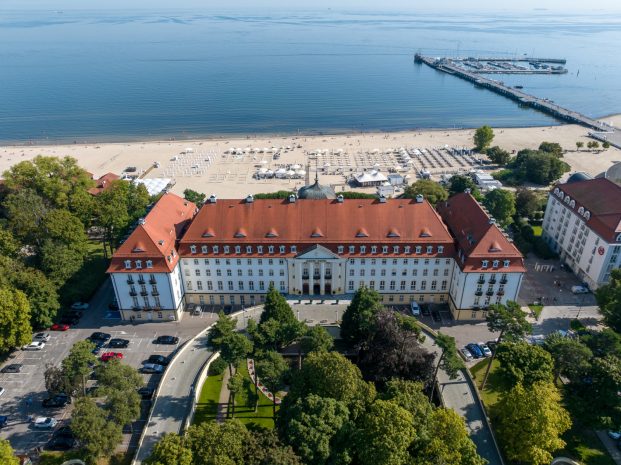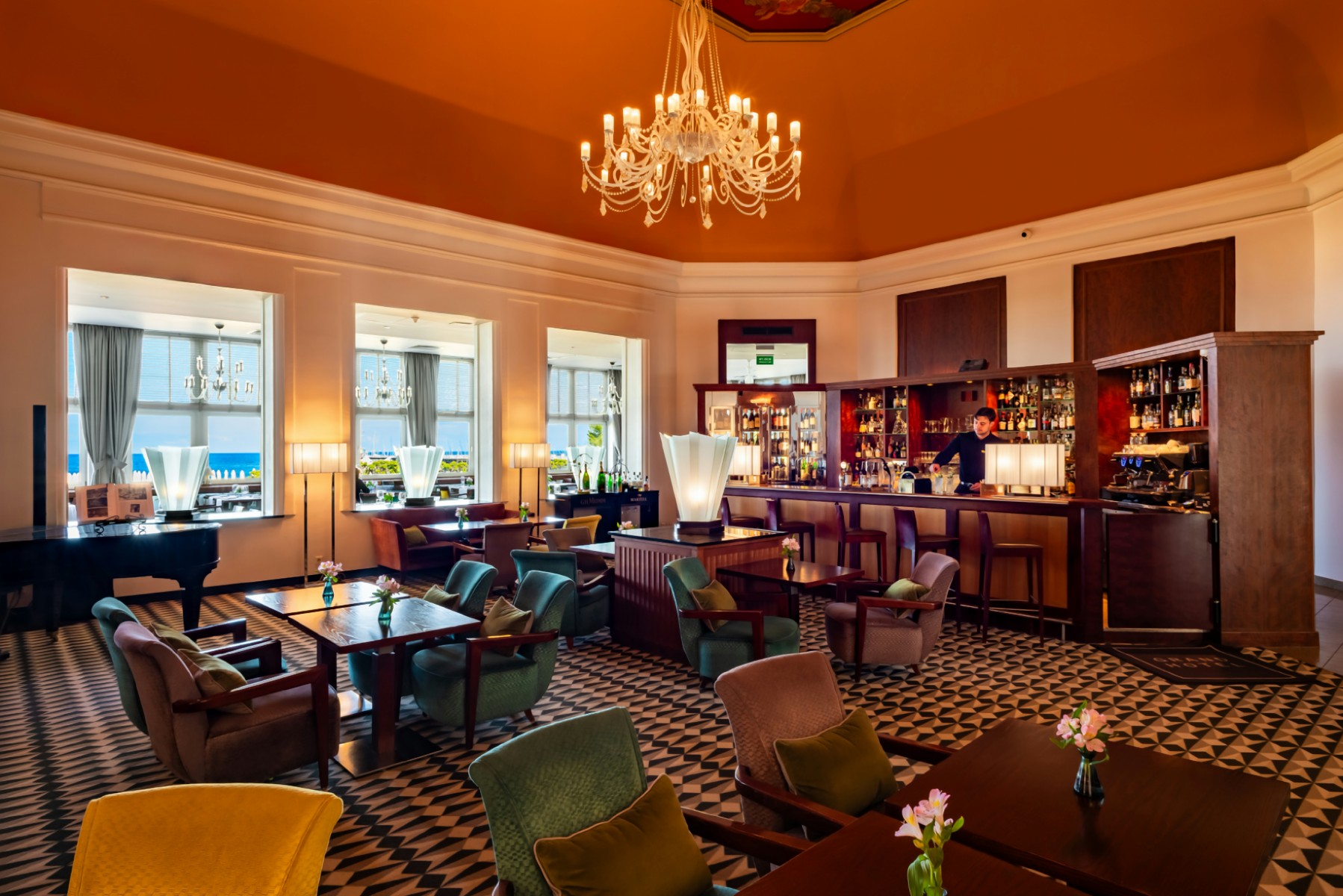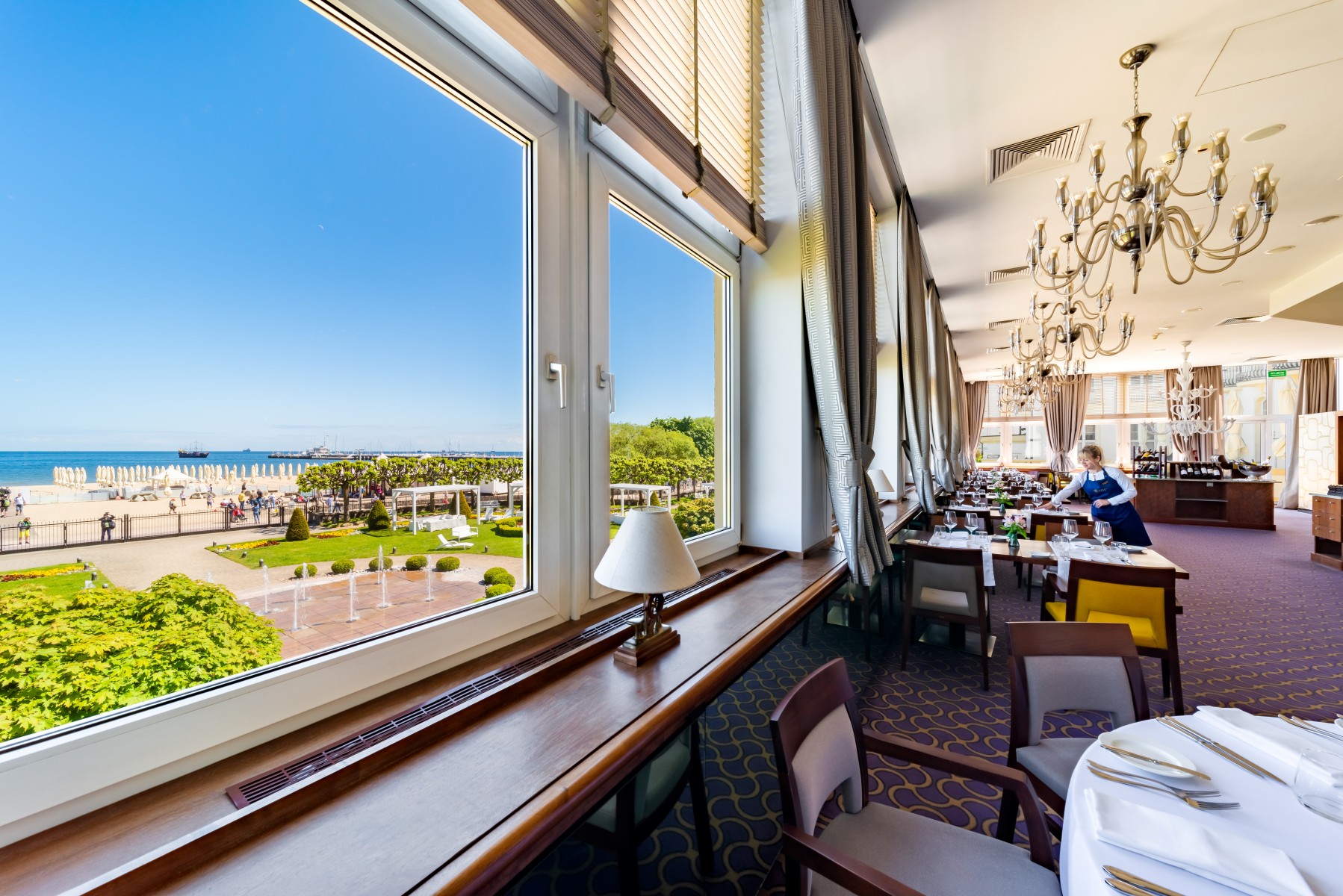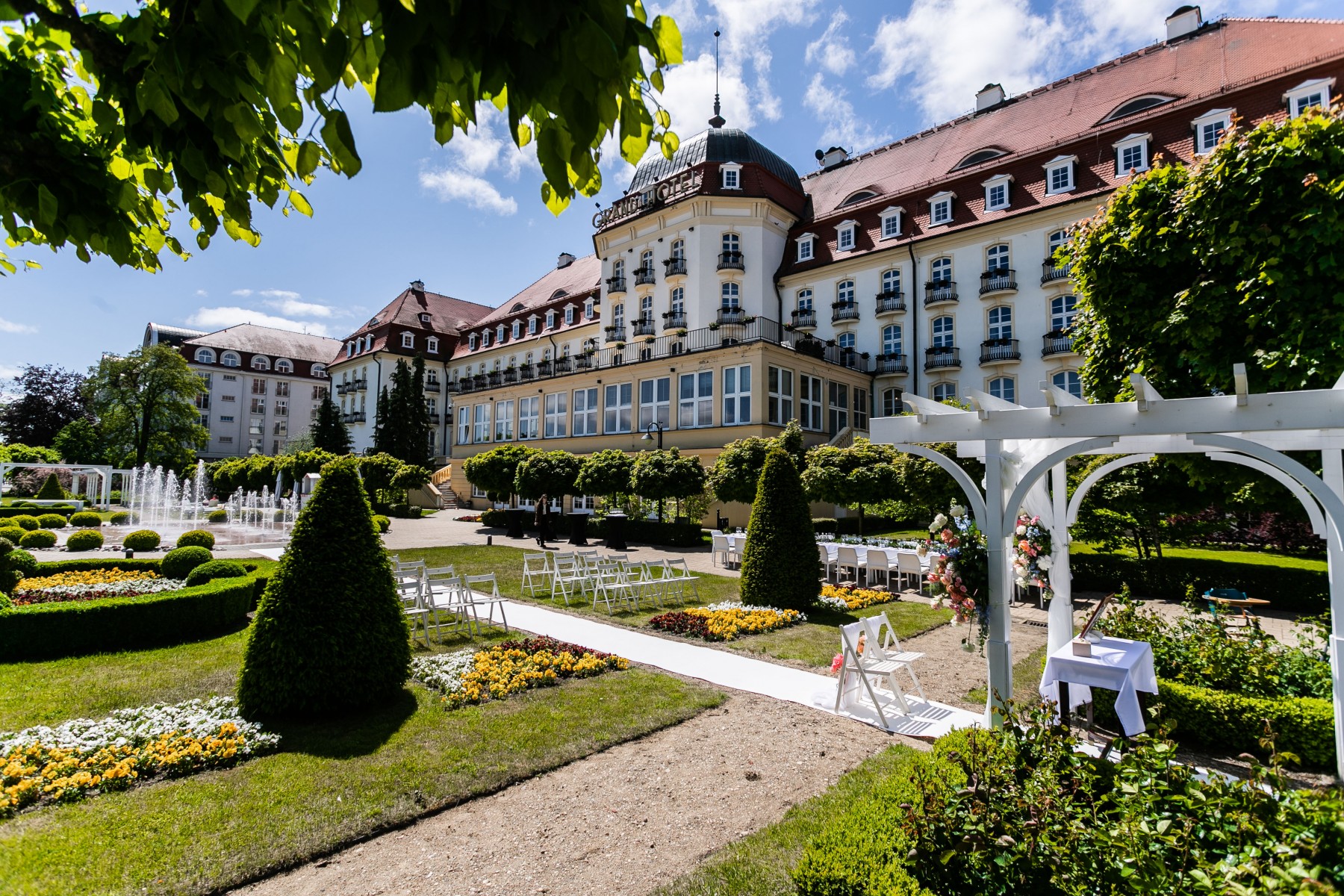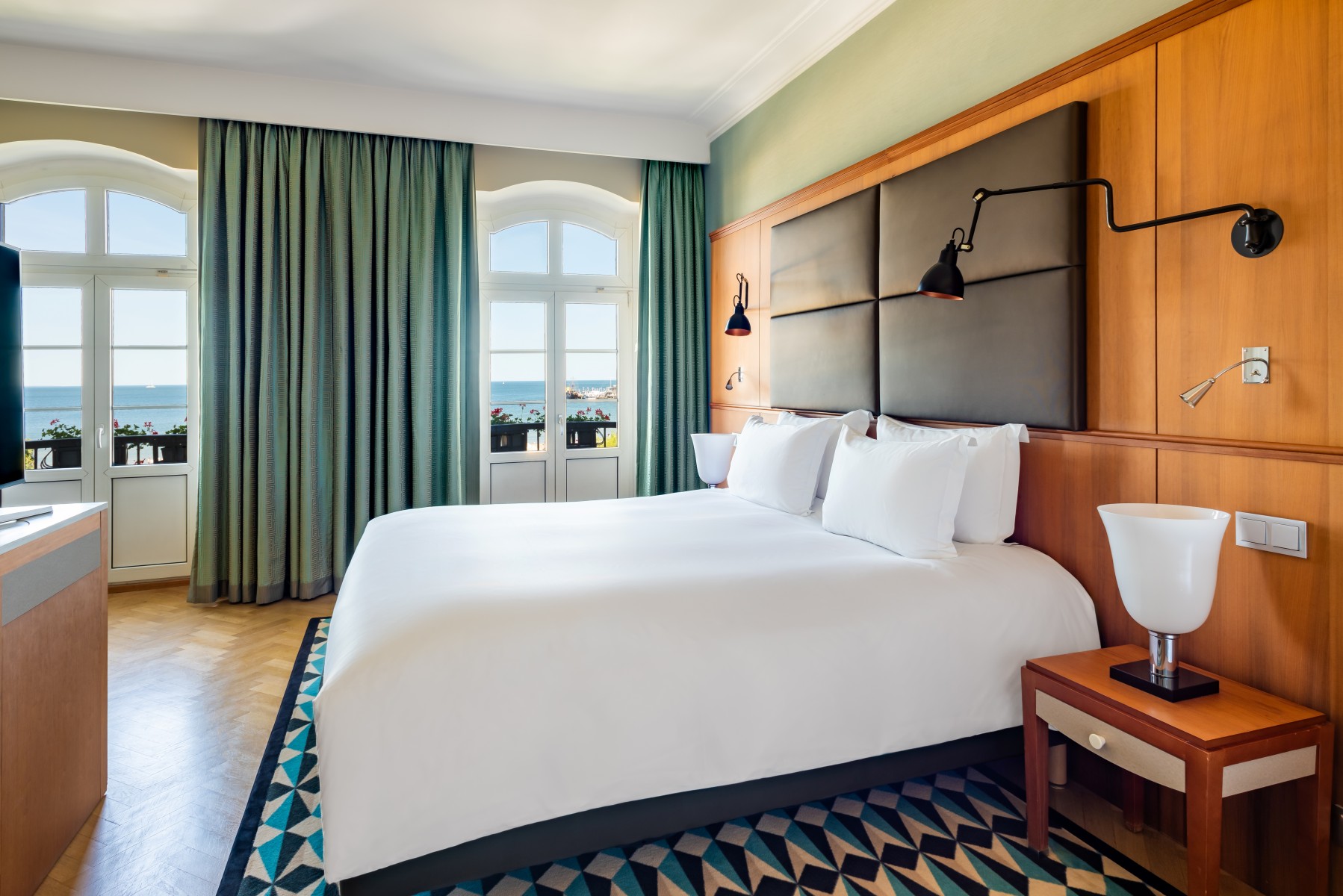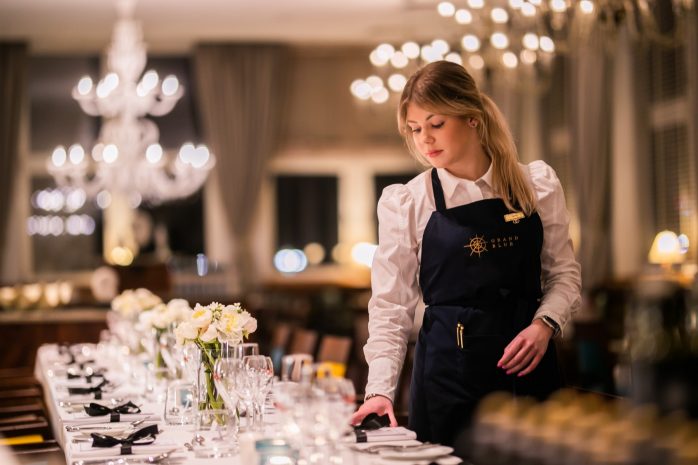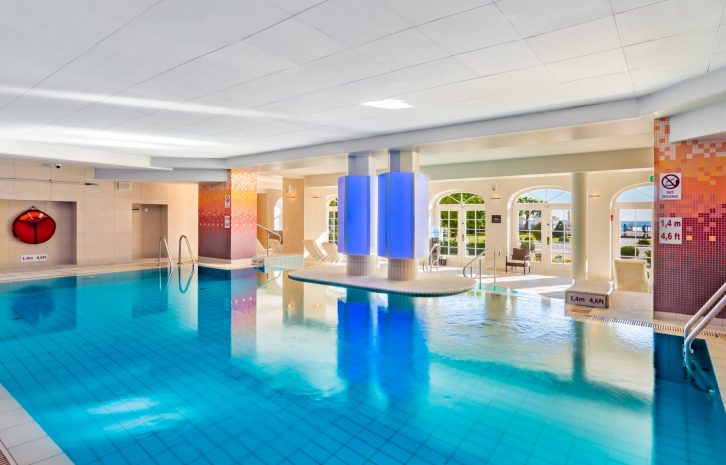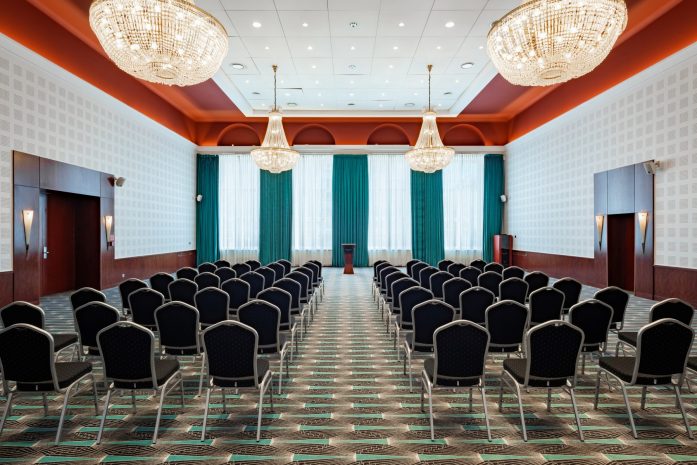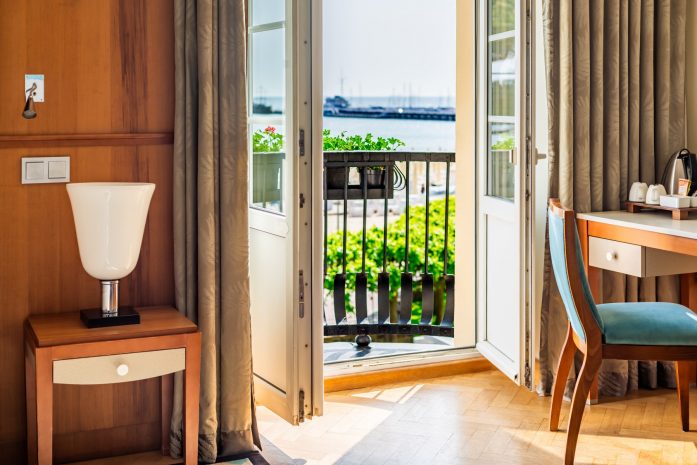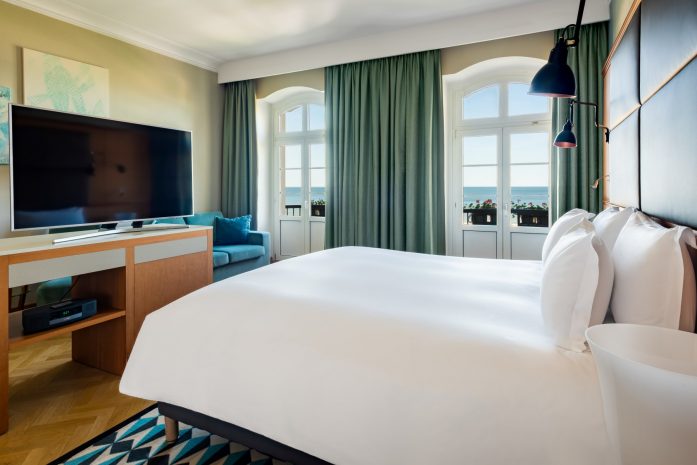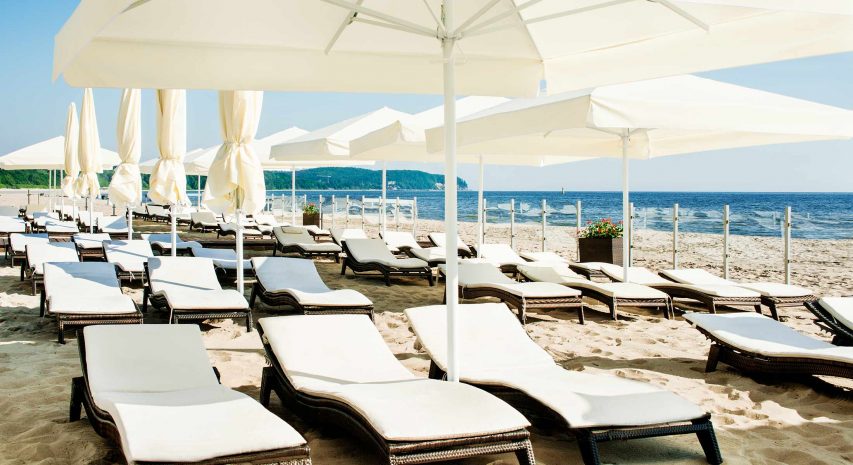History of the Grand Hotel in Sopot
THE LEGENDARY HISTORY OF THE GRAND HOTEL
1927–1939
Kasino Hotel Zoppot
Construction of what would soon become the “Pearl of the North” began in 1923, with the grand opening of Kasino Hotel Zoppot taking place on June 30, 1927. From its inception, the hotel was designed to cater to the most discerning and affluent guests of the seaside resort and Sopot casino. The opening was celebrated with a grand dance gala, featuring a concert conducted by Erich Bochard. The evening’s menu, printed on silk and adorned with the golden coats of arms of Gdańsk and Sopot, remains a symbol of that era’s grandeur. The festivities were so magnificent that the celebrations continued for an entire week.
The hotel’s early years were a time of tremendous success. Kasino Hotel quickly became a symbol of Sopot and a key destination on Europe’s luxury hospitality map. Guests praised not only the impeccable service and opulent interiors but also the innovative amenities—such as a separate tap in each bathroom providing mineral-rich seawater straight from the Baltic.
1939–1945
In the Shadow of War
With the outbreak of World War II, the hotel was seized by German military authorities. Throughout the war, it served a representational role and was repurposed as accommodation for high-ranking Wehrmacht officers. The once lavish interiors were partially transformed into offices and quarters, as luxury gave way to military functionality. Though the building avoided major structural damage, the war left a lasting mark on both the infrastructure and the legacy of the hotel.
1946–2005
Grand Hotel Sopot
Despite the hardships of war, the hotel endured—though stripped of its former glory. By the summer of 1946, it reopened in part, with the restaurant and outdoor café returning to operation. The hotel adopted a new name, Grand Hotel Sopot, and came under the management of the Gdynia-America Shipping Company (Gdynia-Ameryka SA).
In 1950, the state-owned Orbis enterprise assumed ownership, overseeing the hotel through several decades of political and economic change. Nonetheless, the Grand Hotel’s prestige continued to grow. Sopot became a symbol of elegance, and the hotel welcomed countless notable figures from the worlds of politics, art, and entertainment. Among them were Charles De Gaulle, Fidel Castro, Marlene Dietrich, Greta Garbo, Paul Anka, Prince, Lech Wałęsa, Shakira, and Conor McGregor.
The Grand was more than a place of leisure—it emerged as a cultural and artistic hub. On April 1, 1970, it hosted Poland’s first-ever disco night: Musikorama. In 1961, the iconic band “Czerwone Gitary” made their debut on its stage. Over the years, the hotel’s interiors provided the backdrop for legendary films, radio broadcasts, and prestigious events. It featured in productions such as More Than Life at Stake, Reich, Only Me and You, Sztos, 07 Come In, Heavenbound, and How Much Does the Trojan Horse Weigh?
In 1986, the documentary My Place was released, capturing everyday life within the legendary hotel. The Grand also served as creative inspiration for artists including Edyta Geppert, Elżbieta Mielczarek, Leonard Luther, and rapper Taco Hemingway. Author Janusz Leon Wiśniewski set the plots of two of his novels—Grand and Gate—within the hotel’s historic walls.
2005–Present
Sofitel Grand Sopot
In autumn 2005, the hotel underwent its most extensive renovation since its original opening. The building was temporarily closed for a full-scale restoration, and was acquired by the prestigious Accor hotel group. Upon completion, the hotel reopened under the name Sofitel Grand Sopot and was officially classified as a five-star property.
The goal of the renovation was not only to restore its former glory but to redefine luxury in line with modern expectations. Interior spaces were reimagined, 15 new rooms were added, and a wellness zone with a swimming pool was built. The Grand was reborn—retaining its historic charm while embracing contemporary sophistication.
Today, Sofitel Grand Sopot remains an undisputed icon of luxury, elegance, and world-class hospitality—gracefully reigning on the Baltic shoreline, where timeless history meets modern refinement.

